When the pandemic first hit, working from home (WFH) became the norm almost overnight. Since then, it has settled into a new rhythm. On average, people worked from home about 1.6 days a week in 2022, 1.33 days in 2023, and around 1.27 days in 2024/2025. So, while we’re no longer at peak remote work, we’re also not going back to the old 9-to-5 office life.
Looking ahead, flexible work is here to stay. The World Economic Forum predicts that millions more jobs will be remote by 2030. Offices aren’t disappearing, but most people will likely keep splitting their time between home and the workplace.
Most employees now expect some level of flexibility, and smart companies are paying attention. Are you? Here’s everything you need to know about the latest work-from-home statistics.
Key WFH statistics in 2025
- People in the U.S., Canada, the UK, and Australia work from home 1.5 to 2 days per week on average.
- 76% of workers say having control over when and where they work influences whether they stay with a company.
- 99% of professionals say remote or hybrid work has a positive effect on their mental health.
- 76% of remote workers say they worked overtime or outside regular hours at least once in the past week.
- 61% of workers say they’re more productive working from home, and 34% say it’s the same as in-office.
Guide to work-from-home statistics
Work from home adoption around the world
Over the past few years, working from home has gone from a temporary fix during the pandemic to a long-term shift in how many of us work. But while remote and hybrid models are now a big part of modern work culture, how they’re adopted varies a lot depending on location, company size, industry, and even culture.
How much are people working from home?
In the US, the WFH Research team tracks how many paid workdays are done at home vs in the workplace. Their data shows a clear shift over time:
- In 2019, before COVID, only about 5–7% of paid workdays were done from home.
- During the 2020 lockdowns, that jumped to roughly 60%.
- By 2025, things have settled at around 25% of paid workdays worked from home.
So remote work has come down from the peak, but it’s still more than three times higher than before the pandemic. Working from home a couple of days a week is now a normal part of many office jobs, not a special perk for a few people.
The same research group runs the Global Survey of Working Arrangements, which looks at work-from-home patterns in many countries. On average, workers now report about 1.3 days per week working from home. For college-educated employees, that works out to roughly one in four workdays happening at home instead of in the office.
The UK is even higher. Using the same survey, analysis suggests that employees there work from home around 1.8 days per week on average, which puts the UK close to the top among advanced economies for remote days.
Put together, the picture is pretty simple:
- We’re no longer in the “everyone is at home all the time” phase of 2020.
- But we’re also not back to the old five-days-in-the-office routine.
For many knowledge workers in the US, UK, and beyond, about one in four workdays now happens at home, and that level has been fairly stable for the last few years. Work from home has shifted from a “temporary fix” to a built-in part of the normal workweek.
Where do people work from home the most?
Some parts of the world are a lot more open to remote work than others. People in the U.S., Canada, the UK, and Australia work from home the most — about 1.5 to 2 days each week. Western Europe is a little behind, averaging around 1 to 1.5 days. In Latin America and Africa, it’s closer to one day per week. And in many parts of Asia, people work from home the least — just half a day to one day per week on average.
Why such a big difference? Culture plays a big role. One major study found that countries where people value individual freedom and independence, like the U.S., UK, and Australia, are more likely to support flexible work. In places where teamwork and structure are a bigger focus, like many Asian countries, people are more likely to work in the office. Other things that matter include how crowded a city is, how tech-savvy a country is, and how strict their lockdowns were during COVID.
Bigger company, bigger flexibility
Big companies are much more likely to offer WFH or hybrid work than smaller ones. That’s because they need to hire people for lots of different jobs, and sometimes the right person doesn’t live nearby. By offering remote work, they can find the best talent, no matter where they live — even across the country or in other parts of the world.
Who gets to work from home also depends on the role
Managers and executives are more likely to work from home than junior employees. Around 60% of middle managers and 57% of executives work from home at least some of the time. Meanwhile, only 48% of junior staff do, and 43% of them are still working full-time in the office.
Why so? One reason is that junior employees may be seeking mentorship or face-to-face learning, while leaders have more autonomy to choose where they work. But this gap can create tension. When junior employees aren’t given the same flexibility, they might feel left out or even start looking for other jobs.
Speaking of, what employees want also makes a big difference:
Employee preferences for working from home
According to Gallup, about half of full-time workers in the U.S. have jobs that could easily be done from home. Most of them are already working either hybrid or fully from home, and they want to keep it that way!
Flexibility is now a top priority
A Robert Half survey found that 29% of professionals are already looking or planning to look for new jobs, mostly because they want more flexibility. Almost half (48%) said they were specifically looking for hybrid roles, and 26% said they wanted fully remote work. What’s more, 76% of workers said having control over when and where they work strongly influences whether they stay with their employer.
In fact, flexibility is such a big deal that people are willing to make sacrifices for it. According to a WTW global survey, over half of WFH workers said they’d start job-hunting within a year if they were forced back into the office full-time. Some workers even said they’d accept an 8% pay cut just to keep working remotely. And it’s not just employees — a Gartner study found that 1 in 3 executives would consider quitting if their company dropped working from home entirely.
Life changes and lifestyle shifts
Working from home has changed where a lot of people choose to live. Since 2019, 43% more full-time workers now live in rural areas. Younger adults, especially those aged 21 to 30, are 26% more likely to have moved out of cities. Still, about 6 out of 10 business professionals are sticking with city life, often to stay close to their office.
These moves are part of bigger lifestyle shifts. For many workers, especially parents, hybrid work is the sweet spot. Research from Stanford shows that while parents and non-parents work from home at about the same overall rate, parents are much more likely to prefer hybrid setups. Working from home a few days a week helps them balance work and family life better. And when it comes to gender, men and women work from home at pretty much the same rate around the world.
Are people happier working from home or the office?
Most people are happier working from home, or at least having the option to. Work-from-home models consistently score well when it comes to employee morale — according to GWI, remote workers are the most satisfied overall, even more than those who work in the office or in hybrid roles. Improved work-life balance and more personal time are the top reasons cited (both at 34%).
Still, it’s not all perfect. GWI also found that while employees working from home are the most satisfied, they’re also the most likely to be looking for new jobs. Why? Some of it comes down to the industries they work in (high-turnover fields like consulting and advertising), but there’s also the fact that, without physical office ties, switching jobs is easier. And for people who thrive on social interaction, the lack of in-person connection can make fully remote work feel isolating over time.
Finding the right balance
The big thing to remember is this: not everyone wants the same setup. Flexibility looks different for different people, and even for the same person at different stages of life.
For example, younger workers might want some office time to learn and build relationships. Parents often prefer a few days at home to juggle family and work. Some people need quiet time to focus, while others thrive on teamwork and collaboration.
A Zoom survey backs this up — 58% of workers said their ideal work setup will probably change as their life changes. That’s why having options matters. When people can choose where and how they work best, they’re more satisfied and more likely to stick with their company.
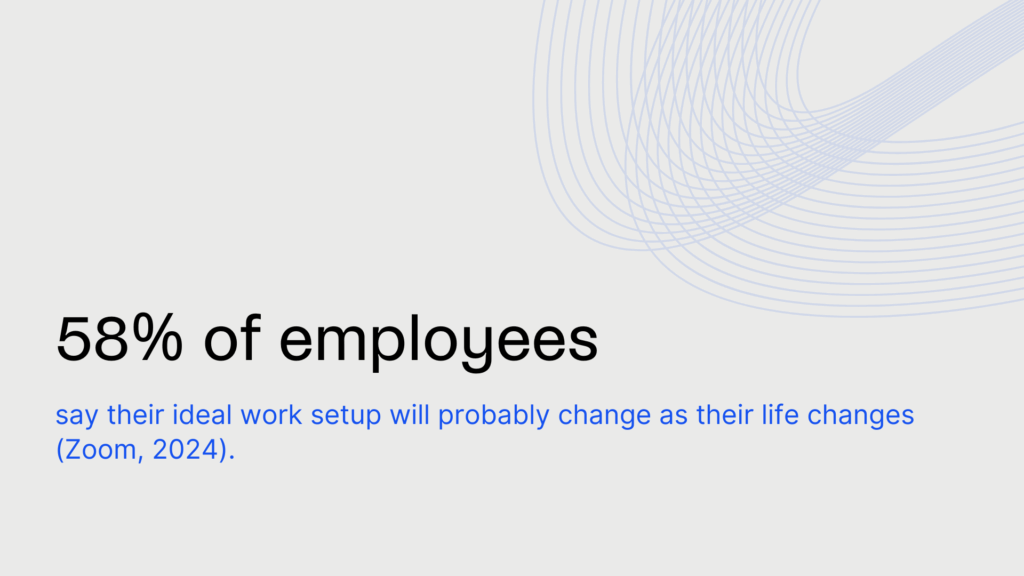
Benefits of working home — statistics
For many employees, working from home brought big mental health benefits. But it also comes with its own set of challenges, like blurred boundaries, longer hours, and feelings of burnout.
According to FlexJobs’ Workforce Wellness Report, a huge 99% of professionals said that remote or hybrid work has had a positive impact on their mental health. More than half (56%) said working fully remote helped them the most, while 43% felt best with a hybrid schedule. Only 1% said going into the office full-time was ideal for their mental health.
These numbers suggest that having more control over your schedule, your workspace, and even your commute (or lack of one) can take a lot of stress off your plate. Being able to work from home, at least some of the time, lets people better manage things like family life, personal errands, or just taking breaks when they need to.
But burnout is still a problem
Even with the perks of WFH, burnout hasn’t gone away — it’s just taken on new forms. A McKinsey study found that about one-third of employees report feeling burned out, whether they work in an office, from home, or in a hybrid setup. Specifically:
- 36% of remote workers feel burned out,
- 35% of in-office workers feel it,
- And 28% of hybrid workers report burnout.
These are worrying numbers. Burnout doesn’t just make people tired — it’s linked to other problems like wanting to quit, feeling less productive, and being less likely to collaborate or support others at work. In short, burnout affects both the person and the team.
One major factor is overworking. While working from home work cuts out commuting and office distractions, it often leads to longer days. GWI research found that:
- 76% of remote workers have worked overtime or outside regular hours at least once in the past week.
- 26% say they’re working longer hours than before.
- Middle managers are especially affected — they’re 20% more likely to report working extra hours.
Why is this happening? When your home becomes your office, it’s harder to “switch off” at the end of the day. Without a commute or a clear stop time, many people just keep going, checking emails late at night or jumping into “one last meeting.”
Also, remote workers can feel like they need to prove they’re working hard, especially if they’re not physically seen by their bosses. This can push people to take on more than they should, which increases stress and the risk of burnout.
Interestingly, people working in offices are more likely to say they’re focused and going above and beyond. According to the McKinsey report:
- 34% of in-person workers strongly agree that they stay focused and put in maximum effort.
25% say they exceed expectations. - In contrast, only 15% of hybrid workers say they exceed expectations.
This doesn’t necessarily mean employees working from home are lazy — in fact, many of them are doing more. But it shows that some people feel more visible and valued when they’re in the office, and that can influence how motivated or supported they feel.
How work from home is changing the workday
Work from home hasn’t just changed where people work. It’s quietly reshaping when and how we work too.
Owl Labs’ 2025 State of Hybrid Work report shows that a lot of people are now blending work and life during the day. Over 59% of workers say they schedule personal appointments during traditional working hours, and 38% say they take up to an hour each day for things like childcare, errands, or health appointments. At the same time, work boundaries are getting fuzzier: about 7% of employees say they have neither a clear start nor end to their day, and 19% say their day has a set start time but no clear end.
A big part of this shift is what Owl Labs calls “microshifting.” Instead of one solid 9–5 block, people break their work into shorter, non-linear chunks that fit around real life. In 2025, about 65% of workers say they’re interested in this kind of structured flexibility, where they work in short blocks based on their energy, responsibilities, or productivity patterns. Managers and caregivers are especially keen, since this style makes it easier to juggle check-ins, school runs, appointments, or caring duties without dropping the ball at work.
Meeting habits are changing along with everything else. Expectations around “normal” meeting times are shifting: about 70% of employees say that 8:00 a.m. or earlier is too early for meetings, and 82% want meetings to end by 4:00 p.m. People are asking for flexibility, but they also want clear boundaries so their days don’t stretch endlessly into early mornings and evenings.
Put simply, the “work from home trend” in 2026 is about much more than laptops at the kitchen table. It’s about smarter scheduling, clearer meeting windows, and micro-adjustments to the day that let people fit work around real life. Instead of one rigid 9–5 block in the office, more workers are quietly redesigning their days so that work and life can sit next to each other without constantly crashing into each other.
Is working from home more effective than in office?
Working from home can be just as effective, and sometimes even more effective, than working in the office, but it really depends on the person, their role, and how well the company supports them.
Working from home productivity research
Let’s start with the positives. A study by Buckman, Barrero, Bloom, and Davis found that working from home has some real upsides. First, it saves people time, sometimes up to two hours a week, just by cutting out commuting. That’s time people can use to relax, get more done, or just manage their day better.
Working from home also gives people more control over how and when they work. This kind of freedom helps people feel less stressed and more in charge of their day. In fact, the researchers said this setup makes workers feel about 2% better off overall than they did before the pandemic.
On the productivity side, the U.S. Bureau of Labor Statistics found that when industries had more remote work, they also became a bit more efficient. They estimated that for every 1% increase in remote work, productivity ticked up by about 0.05%. That’s not huge, but it’s a clear sign that remote work isn’t slowing people down.
Surveys tell a similar story. For example, a Bospar study found that 61% of workers feel more productive at home, and another 34% say they’re just as productive as in the office. Only 5% said they get less done at home.
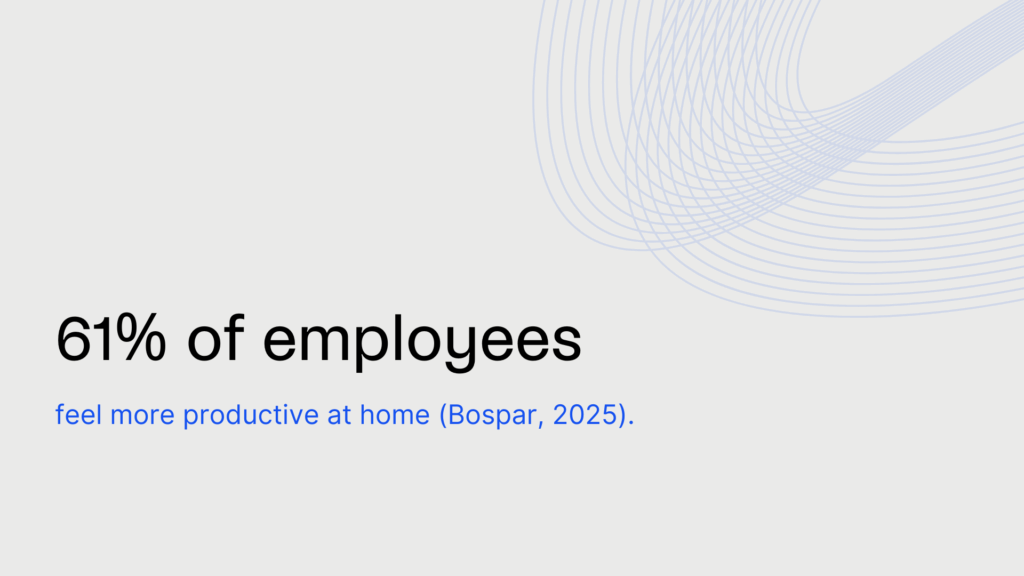
Are all employees more productive working from home?
Of course, it’s not perfect for everyone. A study in the University of Chicago Press Journal found that in some cases, productivity actually dropped by 8–19% when people worked from home.
Why? Not because people were slacking off, they actually worked 1.6 to 2.1 extra hours a day to keep up. But communication got messier. There were fewer focused one-on-one chats and more quick group meetings. People also missed out on casual hallway chats and lunch conversations that often lead to coaching or creative ideas. These gaps hit newer employees and parents hardest. And while more experienced workers helped coordinate things, they didn’t necessarily get more done.
Support matters more than WFH policies
Working from home can be just as productive — and sometimes even better — if people get the support they need. But if companies don’t pay attention, people working from home can start to feel invisible or forgotten. In fact, studies show that fully remote workers are 1.3 times more likely to feel worried about losing their jobs compared to people who work in the office all the time.
Research from McKinsey also shows that just having a remote or hybrid policy isn’t enough. What really makes a difference is how companies support their teams every day. Across the board, workers say they need better help with five big things:
- Collaboration (working together easily)
- Staying connected (feeling part of the team)
- Innovation (coming up with new ideas)
- Mentorship (getting guidance and career advice)
- Skill development (learning and growing at work)
The bottom line? How a company supports people matters way more than where they work. Companies that focus on real connection, good communication, and helping people grow will have the happiest, most successful teams — whether they’re in the office, at home, or a mix of both.
The good news is that companies are starting to figure this out. The best ones aren’t just looking at who’s in the office — they’re making sure WFH employees get regular check-ins, feel included, and have the tools they need to do their jobs well.
A summary of the latest work-from-home statistics
🌍 Regional WFH adoption
- In the US in 2019, about 5–7% of paid workdays were done from home (G-SWA, 2025)
- During the 2020 lockdowns, that jumped to roughly 60% of workdays (G-SWA, 2025)
- By 2025, it settled at around 25% of paid workdays worked from home (G-SWA, 2025)
- Globally, workers now report about 1.3 days per week working from home (G-SWA, 2025)
- For college-educated employees, that’s roughly one in four workdays at home (G-SWA, 2025)
- In the UK, employees work from home about 1.8 days per week on average (G-SWA, 2025)
- For many knowledge workers in the US, UK, and elsewhere, about one in four workdays now happens at home, and that level has been fairly stable in recent years (G-SWA, 2025)
- U.S., Canada, UK, and Australia: 1.5–2 WFH days per week (G-SWA, 2025)
- Western Europe: 1–1.5 WFH days per week (G-SWA, 2025)
- Latin America & Africa: ~1 WFH day per week (G-SWA, 2025)
- Asia: 0.5–1 WFH day per week (G-SWA, 2025)
🏢 Company size & role differences
- 60% of middle managers work remotely at least sometimes (GWI, 2025)
- 57% of executives work remotely at least sometimes (GWI, 2025)
- 48% of junior employees work remotely (GWI, 2025)
- 43% of junior staff still work fully in-office (GWI, 2025)
👥 Employee preferences
- ~50% of U.S. full-time workers have remote-capable jobs (Gallup, 2025)
- Most remote-capable workers already use hybrid or remote setups (Gallup, 2025)
- 29% of professionals are looking/planning to look for a new job due to flexibility needs (Robert Half, 2025)
- 48% want hybrid roles (Robert Half, 2025)
- 26% want fully remote work (Robert Half, 2025)
- 76% say flexibility influences whether they stay with a company (Robert Half, 2025)
- Over 50% of remote workers would job hunt if forced back full-time (WTW, 2024)
- Nearly 1 in 2 would accept an 8% pay cut to keep remote work (WTW, 2024)
- 1 in 3 executives would consider quitting if remote work were eliminated (Gartner, 2025)
🏡 Lifestyle shifts
- 43% increase in full-time workers living in rural areas since 2019 (GWI, 2025)
- People aged 21–30 are 26% more likely to have moved out of cities (GWI, 2025)
- About 6 in 10 business professionals still live in cities (GWI, 2025)
- Parents and non-parents work from home at similar overall rates (Stanford, 2025)
- Parents are more likely to prefer hybrid work (Stanford, 2025)
- Men and women work from home at roughly the same rate worldwide (G-SWA, 2025)
- 59% of workers schedule personal appointments during traditional working hours (Owl Labs, 2025)
- 38% of workers say they take up to an hour a day for personal tasks (childcare, errands, health appointments, etc.) (Owl Labs, 2025)
- 7% of employees say they have neither a clear start nor a clear end to their workday (Owl Labs, 2025)
- 19% say their workday has a set start time but no clear end time (Owl Labs, 2025)
- 65% of workers are interested in “microshifting” their day into short, non-linear work blocks (Owl Labs, 2025)
- 70% of employees say 8:00 a.m. or earlier is too early for meetings (Owl Labs, 2025)
- 82% want meetings to end by 4:00 p.m. (Owl Labs, 2025)
😊 Happiness and job satisfaction
- Remote workers are the most satisfied overall (GWI, 2025)
- Top reasons: 34% say better work-life balance, 34% say more personal time (GWI, 2025)
- Remote workers are also the most likely to be job hunting (GWI, 2025)
- 58% say their ideal work setup will change as their life changes (Zoom, 2024)
- 99% say remote or hybrid work positively impacts their mental health (FlexJobs, 2024)
- 56% say fully remote helped most; 43% say hybrid was best (FlexJobs, 2024)
- Only 1% say full-time in-office work is best for mental health (FlexJobs, 2024)
- 36% of remote workers feel burned out (McKinsey, 2025)
- 35% of in-office workers feel burned out (McKinsey, 2025)
- 28% of hybrid workers feel burned out (McKinsey, 2025)
- 76% of remote workers worked outside regular hours at least once in the past week (GWI, 2025)
- 26% say they’re working longer hours than before (GWI, 2025)
- Middle managers are 20% more likely to report working extra hours (GWI, 2025)
- 34% of in-office workers say they give maximum effort (McKinsey, 2025)
- 25% of in-office workers say they exceed expectations (McKinsey, 2025)
- Only 15% of hybrid workers say they exceed expectations (McKinsey, 2025)
- Fully remote workers are 1.3x more likely to feel insecure about their job (GWI, 2025)
💼 Working from home productivity statistics
- Working from home saves up to 2 hours per week in commute time (Buckman et al., 2025)
- WFH improves worker well-being by ~2% (Buckman et al., 2025)
- A 1% rise in remote work is linked to a 0.05% increase in productivity (BLS, 2025)
- 61% of workers feel more productive at home (Bospar, 2024)
- 34% feel equally productive at home and in the office (Bospar, 2024)
- Only 5% say they’re less productive at home (Bospar, 2024)
- Fully remote workers are 1.3x more likely to feel insecure about their job (GWI, 2025)
Sources
- Cevat Giray Aksoy, Jose Maria Barrero, Nicholas Bloom, Steven J. Davis, Mathias Doll, Pablo Zarate, Global Survey of Working Arrangements (G-SWA)
- Pablo Zarate, Mathias Dolls, Steven J. Davis, Nicholas Bloom, Jose Maria Barrero, and Cevat Giray Aksoy, Why Does Working from Home Vary Across Countries and People
- Shelby Buckman, Jose Maria Barrero, Nicholas Bloom, and Steven J. Davis, Measuring Work from Home
- Michael Gibbs, Friederike Mengel, and Christoph Siemroth, Work from Home and Productivity: Evidence from Personnel and Analytics Data on Information Technology Professionals
- GWI, Working from home vs. working in the office: Key stats and trends for 2025
- McKinsey, Returning to the office? Focus more on practices and less on the policy
- Robert Half, Remote Work Statistics and Trends for 2025
- Zoom, Navigating the Future of Work: Global Perspectives on Hybrid Models and Technology
- Gallup, Hybrid Work Indicator
- WTW, Flexible Work Models Pulse Survey
- Gartner, The Data Is In: Return-to-Office Mandates Aren’t Worth the Talent Risks
- U.S. Bureau of Labor Statistics (BLS), The rise in remote work since the pandemic and its impact on productivity
- Bospar’s 10th anniversary research confirms remote work drives superior business outcomes
- FlexJobs, State of the Workforce Report
- Archie, Hybrid Work Statistics: Productivity & Preferences
- Archie, Return-To-Office Statistics, Research & Trends
- Archie, The Latest Remote Work Statistics and Trends
- WFH Research, Global Survey of Working Arrangements (G-SWA)
- Pew Research Center, Many remote workers say they’d be likely to leave their job if they could no longer work from home
- Owl Labs, State of Hybrid Work 2025
- CIPD, Flexible and hybrid working practices in 2025

Berenika Teter
Archie's Content Manager, fueled by filter coffee and a love for remote work. When she’s not writing about coworking spaces and hybrid workplaces, you can probably find her exploring one.
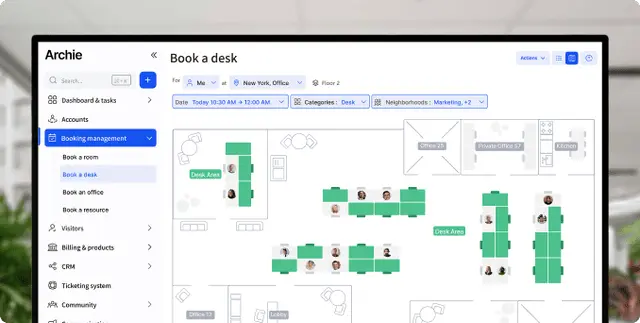




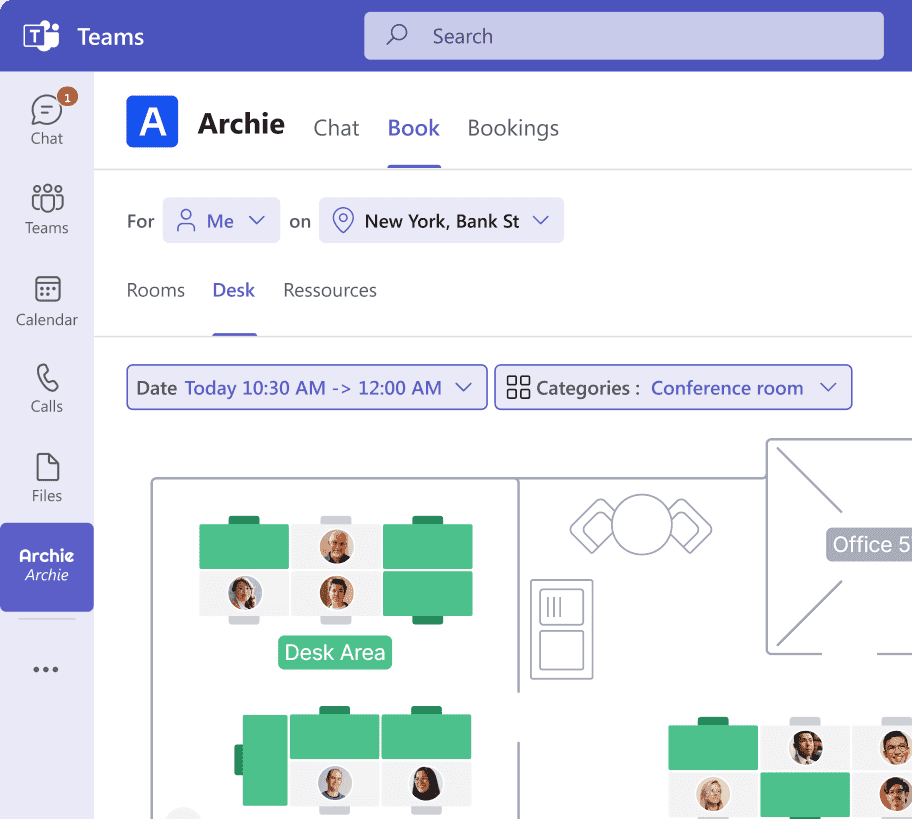
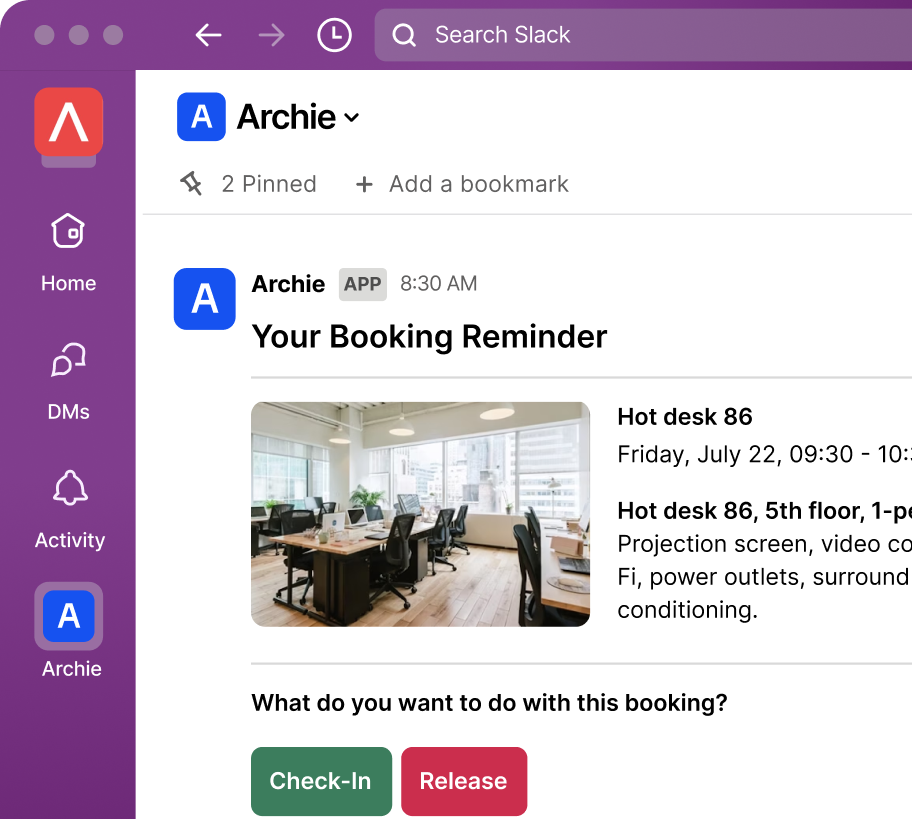
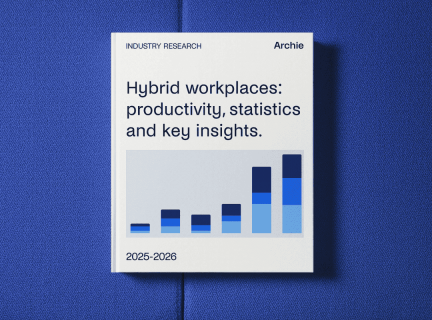


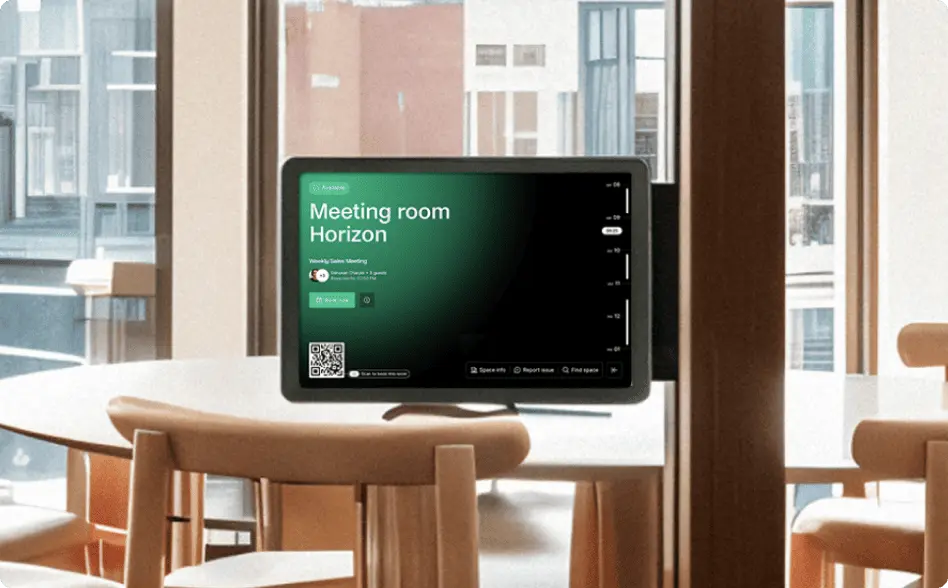

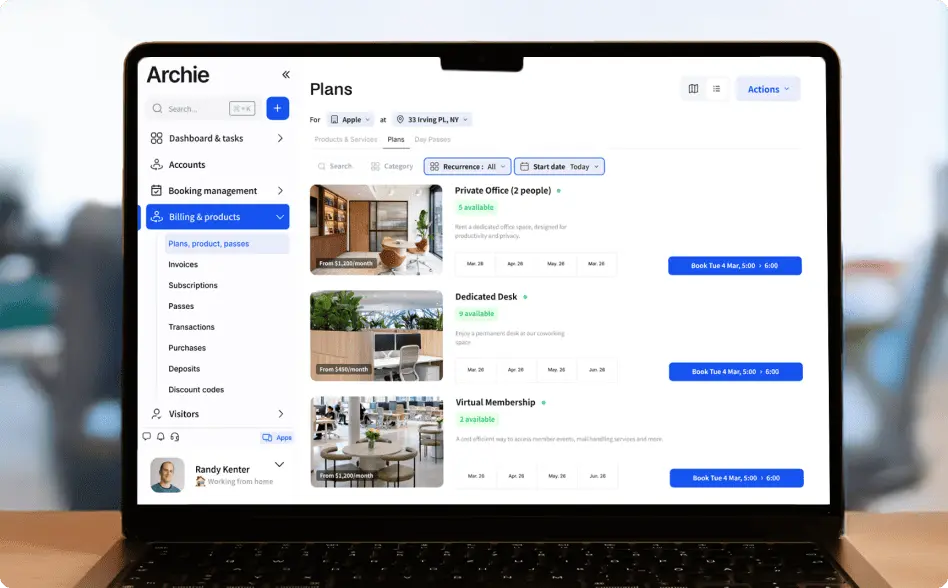


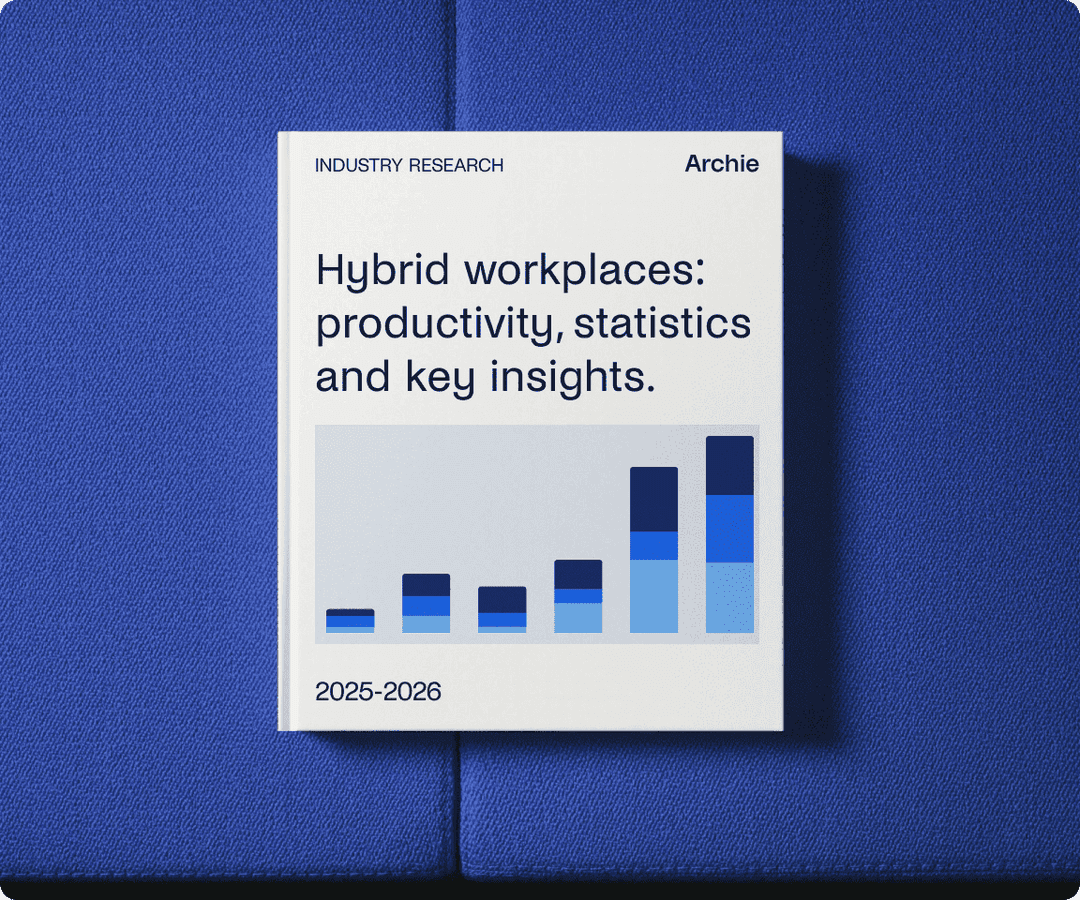

![WFH FTW? Work From Home vs Office Statistics [2026] A person working at a desk in front of a computer, with sunlight coming through the window behind them.](https://archieapp.co/blog/wp-content/uploads/2025/04/Latest-work-from-home-statistics-cover-image.jpg)
![The Latest Coworking Statistics & Industry Trends [2026] A cozy coworking space with wooden walls, warm lighting, and a large map of South America.](https://archieapp.co/blog/wp-content/uploads/2025/08/Latest-coworking-statistics-cover-image-400x400.jpg)
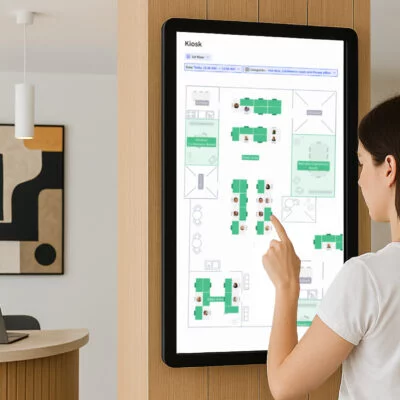
![RTO: Return-To-Office Statistics, Research & Trends [2026] Modern meeting room with large windows, a wooden conference table, pink chairs, and industrial-style ceiling lighting.](https://archieapp.co/blog/wp-content/uploads/2025/04/RTO-statistics-cover-image-400x400.png)
